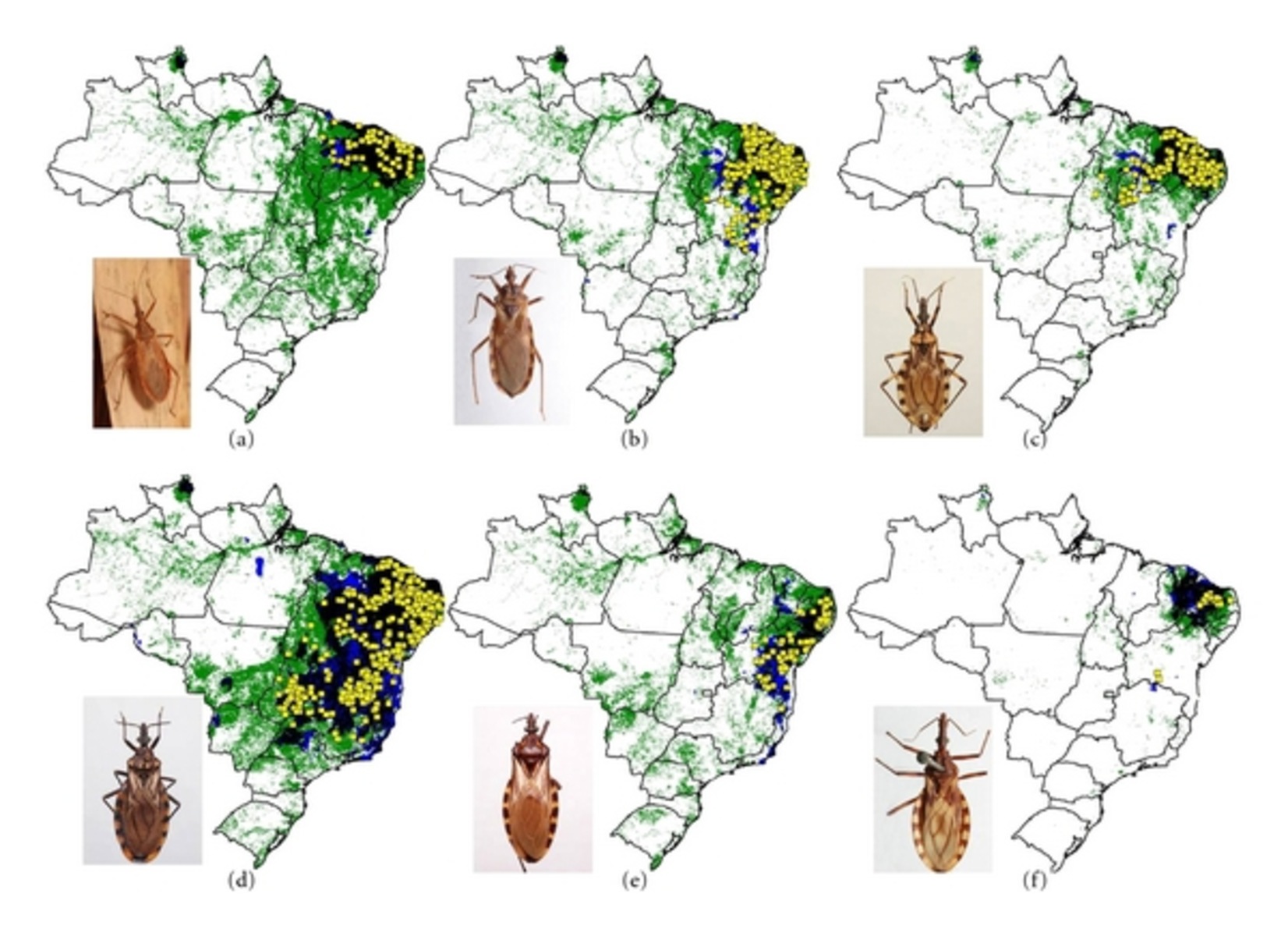
Ecological niche modeling is a fascinating and innovative technique used in the field of biology to understand the distribution and potential habitats of different species. It offers a valuable tool for scientists to predict species’ responses to environmental changes and aid in conservation efforts.
In this article, we will explore 19 surprising facts about ecological niche modeling that highlight its importance and relevance in the study of biodiversity and ecosystem dynamics. From its origins and applications to its limitations and future possibilities, we will delve into the intricacies of this powerful tool.
Whether you are a biology enthusiast, a conservationist, or simply curious about the wonders of nature, prepare to be amazed by the fascinating world of ecological niche modeling.
Key Takeaways:
- Ecological Niche Modeling helps scientists predict where different species are likely to live by analyzing environmental factors like temperature and precipitation. It’s like a crystal ball for the natural world!
- Ecological Niche Modeling is like a superhero tool for conservationists, helping them plan and manage efforts to protect species and their habitats. It’s like a GPS for saving the planet’s biodiversity!
Ecological Niche Modeling is a powerful tool for predicting species distributions with remarkable accuracy.
Ecological Niche Modeling, also known as species distribution modeling, utilizes various environmental factors to determine the suitable habitat for a particular species. By analyzing variables such as temperature, precipitation, and land cover, scientists can create models that can predict where a species is likely to occur.
Ecological Niche Modeling can be applied to a wide range of species, from plants to animals and even microorganisms.
Whether it’s studying the distribution of a specific bird species or understanding how climate change affects the occurrence of malaria-carrying mosquitoes, Ecological Niche Modeling provides valuable insights into the spatial dynamics of different organisms.
Ecological Niche Modeling can help in conservation planning and management.
By identifying potential habitats and areas of high species richness, conservationists can prioritize their efforts and allocate resources more effectively. Ecological Niche Modeling can also assist in identifying areas that are susceptible to invasive species or habitat degradation.
Ecological Niche Modeling takes into account both biotic and abiotic factors.
It considers not only the physical characteristics of the environment but also the interactions between organisms. This holistic approach provides a more comprehensive understanding of species distributions and their ecological requirements.
Ecological Niche Modeling can be used to predict the spread of diseases.
By analyzing environmental conditions suitable for disease vectors, such as mosquitoes carrying the Zika virus, researchers can anticipate the potential expansion of diseases and implement effective preventive measures.
Ecological Niche Modeling can be used to study the impacts of climate change on species distributions.
As the climate changes, habitats shift, and species are forced to migrate in search of suitable conditions. Ecological Niche Modeling helps us understand how species respond and adapt to these changes, providing crucial insights for conservation and management strategies.
Ecological Niche Modeling can incorporate future climate scenarios to project species distributions.
By considering climate change projections, scientists can anticipate how species distributions might shift in the coming years. This information is essential for implementing proactive conservation strategies and adapting to the challenges posed by a changing climate.
Ecological Niche Modeling can reveal potential areas of species overlap and competition.
By analyzing the ranges of multiple species, researchers can identify areas where different species may come into contact and compete for resources. This information is valuable for understanding community dynamics and designing conservation plans that promote coexistence.
Ecological Niche Modeling has applications in agriculture and pest management.
By predicting the potential distribution of crop pests or invasive plant species, Ecological Niche Modeling helps farmers and land managers in implementing effective pest control strategies and minimizing crop damage.
Ecological Niche Modeling relies on accurate data and robust statistical methods.
To obtain reliable predictions, scientists need quality data on species occurrences and environmental variables. They also employ various modeling techniques, such as machine learning algorithms and statistical models, to ensure the accuracy and robustness of the results.
Ecological Niche Modeling can help identify areas with suitable conditions for species reintroduction.
By pinpointing habitats that closely resemble the historical range of an endangered species, Ecological Niche Modeling aids in planning reintroduction programs and supporting the recovery of threatened populations.
Ecological Niche Modeling considers species interactions, such as predator-prey relationships and mutualistic associations.
This comprehensive approach allows researchers to explore the ecological dynamics between different organisms and gain insights into the complex webs of interactions that occur within ecosystems.
Ecological Niche Modeling can help predict the impact of land use changes on biodiversity.
By analyzing how altering land use patterns, such as urbanization or deforestation, can affect species distributions, Ecological Niche Modeling provides valuable information for sustainable land management and conservation planning.
Ecological Niche Modeling can be used to study the effects of habitat fragmentation on species distributions.
Isolated patches of habitat can have a significant impact on species distributions. Ecological Niche Modeling can help identify areas that serve as important corridors or habitats for maintaining connectivity between fragmented landscapes.
Ecological Niche Modeling can assist in predicting the potential range expansion of invasive species.
By analyzing the environmental conditions that invasive species thrive in, Ecological Niche Modeling helps predict their potential spread and allows for early detection and management strategies.
Ecological Niche Modeling can be integrated with remote sensing and GIS technologies for more accurate predictions.
By combining satellite imagery and spatial data, researchers can enhance the resolution and accuracy of species distribution models, leading to more precise predictions and informed decision-making.
Ecological Niche Modeling has limitations and uncertainties that need to be considered.
Factors such as data quality, model assumptions, and the dynamic nature of ecological processes introduce uncertainties in the predictions. However, scientists continually refine their models to reduce these uncertainties and improve the reliability of Ecological Niche Modeling.
Ecological Niche Modeling is constantly evolving with advancements in technology and data availability.
New tools and methodologies are being developed to enhance the accuracy and applicability of species distribution models. This dynamic field of research continues to contribute valuable insights to ecological and conservation science.
Ecological Niche Modeling plays a crucial role in understanding and conserving Earth’s biodiversity.
By uncovering the factors that shape species distributions and providing insights into their ecological requirements, Ecological Niche Modeling helps guide conservation efforts, mitigate threats, and promote the sustainable management of our natural resources.
Conclusion
Ecological niche modeling is a powerful tool that allows scientists to predict and understand species distributions in an ever-changing world. By analyzing environmental variables and species occurrence data, researchers can create models that provide valuable insights into habitat suitability, species interactions, and even climate change impacts. The 19 surprising facts about ecological niche modeling highlighted in this article demonstrate the wide-ranging applications and importance of this field. From predicting the spread of invasive species to identifying potential hotspots for conservation, ecological niche modeling is revolutionizing our understanding of biodiversity and ecosystem dynamics. As technology and data availability continue to improve, we can expect ecological niche modeling to play an even greater role in conservation and decision-making efforts worldwide.
FAQs
1. What is ecological niche modeling?
Ecological niche modeling is a technique used by scientists to predict the suitable habitat and distribution of species based on environmental variables and species occurrence data.
2. How does ecological niche modeling work?
Ecological niche modeling works by analyzing the relationship between species occurrence and environmental variables such as temperature, precipitation, and land cover. This information is then used to create models that can predict the potential distribution of a species in different areas.
3. What are the applications of ecological niche modeling?
Ecological niche modeling has a wide range of applications, including predicting the spread of invasive species, identifying potential habitat for conservation efforts, understanding the impacts of climate change on species distributions, and guiding land-use planning and management.
4. How accurate are ecological niche models?
The accuracy of ecological niche models depends on the quality and quantity of the data used, as well as the assumptions and methods used in the modeling process. While they are a valuable tool, it is important to interpret the results with caution and consider other factors that may influence species distributions.
5. Can ecological niche modeling be used for all species?
Ecological niche modeling can be used for a wide variety of species, but its effectiveness may vary depending on the availability of data and the ecological characteristics of the species being studied.
Ecological niche modeling's fascinating insights barely scratch the surface of Earth's incredible biodiversity. Dive deeper into biogeography to understand how species are distributed across our planet. Explore the mind-boggling variety of life through biodiversity facts that will leave you in awe. Discover how conservation biology strives to protect and preserve the natural world for future generations. Each of these captivating topics offers a unique perspective on the intricate web of life that surrounds us, waiting to be explored.
Was this page helpful?
Our commitment to delivering trustworthy and engaging content is at the heart of what we do. Each fact on our site is contributed by real users like you, bringing a wealth of diverse insights and information. To ensure the highest standards of accuracy and reliability, our dedicated editors meticulously review each submission. This process guarantees that the facts we share are not only fascinating but also credible. Trust in our commitment to quality and authenticity as you explore and learn with us.


